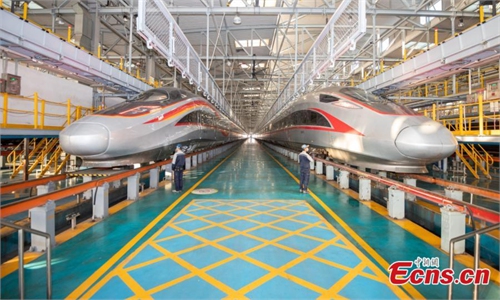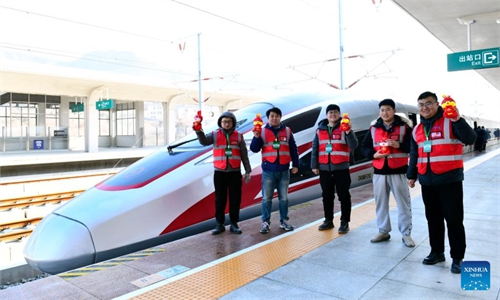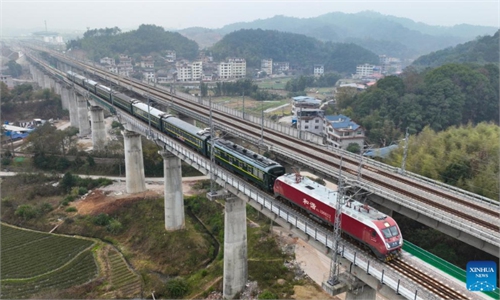More than 3,000 km of new railway lines to operate in 2023, including 2,500 km high-speed lines
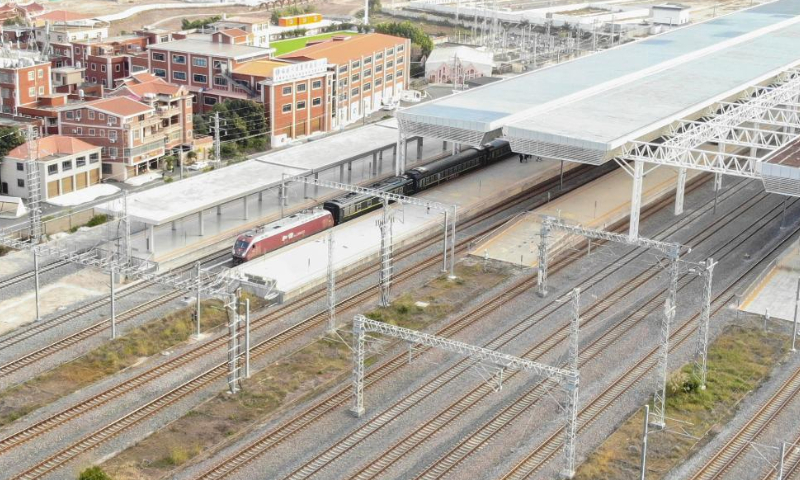
The train T8010 leaves Quanzhou railway station in Quanzhou, southeast China's Fujian Province, Dec. 30, 2022. Photo: Xinhua
China's railway operator plans to carry 2.69 billion passengers in 2023, with expected revenues to return to the level of 2019, according to an annual industry work meeting held on Tuesday, which set goals for 2023 and reviewed operations in 2022.
China State Railway Group Corp (China Railway) said at the meeting that its 2023 target is to achieve 817.5 billion yuan ($118.5 billion) in business revenues, up 18 percent over 2022, and restore overall revenue to the level of 2019, according to a statement China Railway sent to the Global Times.
While ensuring safety, the company expects to carry 2.69 billion passengers in 2023, up 67.6 percent year-on-year, and ship 3.97 billion tons of goods, up 1.8 percent. In 2022, 1.61 billion rail passenger trips were made.
China Railway will ramp up national railways construction including the Sichuan-Xizang Railway and a total of 102 railway projects are planned in the Outline of the 14th Five-Year Plan (2021-25) for National Economic and Social Development and Vision 2035 of China.
More than 3,000 kilometers of new railway lines will be put into operation in 2023, including 2,500 kilometers of high-speed railways.
In 2022, China completed 710.9 billion yuan of capital investment in railways and put 4,100 km of new railway lines into operation, including 2,082 km of high-speed railways.
As of the end of 2022, China had 155,000 kilometers of railways in operation, including 42,000 kilometers of high-speed lines.
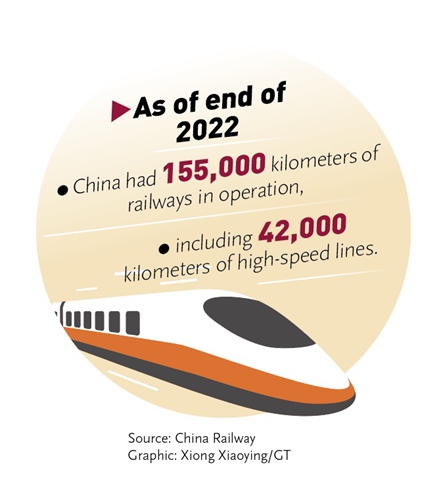
The national railway operator has vowed to enrich its services, including the development of cold-chain transportation and other modern logistical services.
It said it will use market-based means to make full use of idle passenger trains and other resources to develop tourism services, to help domestic consumption and rural revitalization.
In terms of international cooperation, China Railway said it will continue to increase the capacity and quality of China-Europe Railway Express, China-Laos Railway and other land-sea corridors. It will promote railway connectivity among China, Laos and Thailand.
In 2022, China-Europe freight trains fully played their role as a key route for logistics. A total of 16,000 China-Europe freight trains were operated, up 9 percent year-on-year and 1.6 million standard containers were shipped, up 10 percent. The China-Europe Railway now connects 108 cities in China and 208 cities in 25 European countries.
In the first year of operation, the China-Laos railway carried 8.5 million passengers and 11.2 million tons of goods. Some 3,000 cross-border cargo trains were completed, and the value of cross-border cargo has exceeded 13 billion yuan.
In 2022, China Railway helped ensure the supply of thermal coal, grain, fertilizer, pandemic prevention products and other key materials. The national railway delivered 3.9 billion tons of goods in 2022, up 4.7 percent year-on-year, including 1.49 billion tons of coal, up 13 percent.
Global Times
